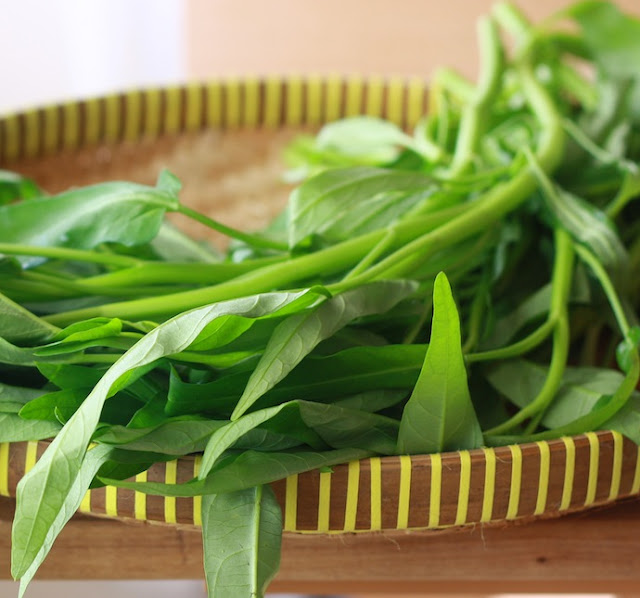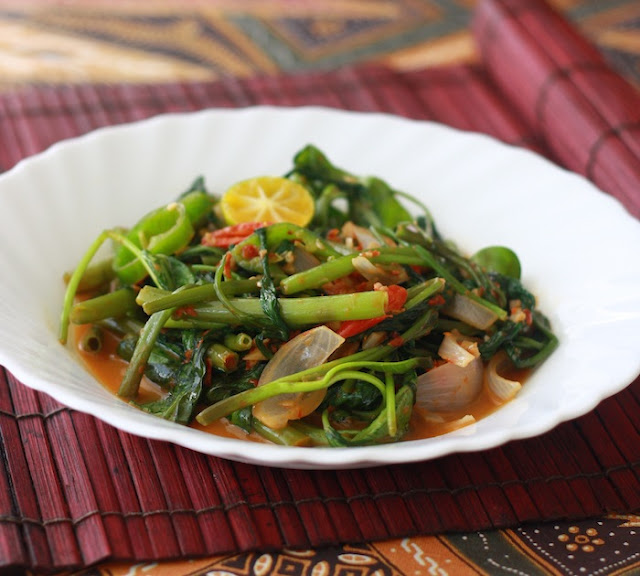
Lenggang lenggang kangkung
Kangkung tepi telaga
Lenggang lenggang kangkung
Kangkung tepi telaga
You are meandering with the river, strolling along its bank. A gentle breeze lifts your spirits and sways the leaves of the kangkong plants that float peacefully at the river’s edge.
Balik dari menyabung
Makanlah nasi sahaja
Balik dari menyabung
Makanlah nasi sahaja
A song of village life; of a river that flows calmly in its own wandering way; of a leafy plant that grows wild in the water, softly guided by the wind and by the current.
A folk song we learn in school in Malaysia and Indonesia about the meaning of a much loved vegetable – kangkong.

Known as kangkong throughout Southeast Asia, the leafy vegetable may go by a myriad of other names such as water spinach, river spinach, water convolvulus, Chinese spinach or water morning glory.

The thin, hollow stems and succulent leaves of the kangkong plant make it a popular choice for a healthy green on dinner tables through the region. The young, fresh leaves and stems have a mild nutty flavor. Sweet even. And when cooked for just a flash on high fire, the veggie retains its vibrant green color and refreshing crunch.

The abundance of kangkong in Southeast Asia has made it a favorite veggie for cooks to toss into curries with coconut milk, or into soups like Penang Hokkien Mee (prawn noodles), or into the fryer like crispy kangkong in the Philippines, or the most likely choice, into the wok to be stir-fried with garlic and chili peppers.
In Malaysia, kangkong is matched with sambal belacan, and stir-fried into a famous dish called Sambal Kangkong.

Sambal kangkong – a dish so admired by the Malaysian-Chinese community that they refer to it as “The Beauty of Malay Scenery” 马来风光. The spicy, pungent dish is a staple at Chinese and Malay restaurants in Malaysia. And if a home cook doesn’t mind smelling up the kitchen with fermented shrimp paste (belacan), sambal kangkong is a common dish at home too.


0 comments:
Post a Comment